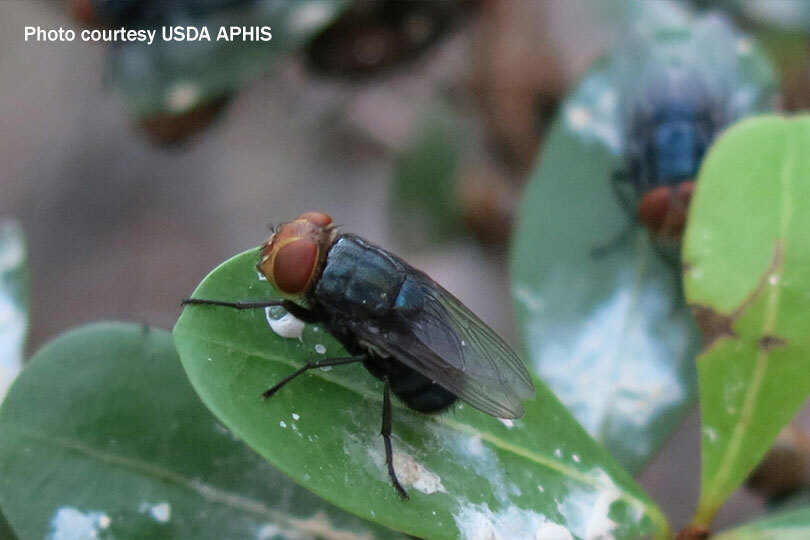A New World Screwworm (NWS) Response Playbook was released by the U.S. Department of Agriculture’s (USDA) Animal and Plant Health Inspection Service (APHIS).
The playbook outlines key approaches, resources and tools to implement animal health response activities in the event the pest is detected in the U.S.
“USDA continues to execute our five-pronged plan to keep NWS out of the United States,” U.S. Secretary of Agriculture Brooke Rollins said. “While we continue to aggressively protect the U.S. border and are working with Mexico to stop the pest from continuing to spread further north, we also have to ensure our domestic response plans are ready to activate if needed.”
The playbook outlines critical response strategies for federal, state and local responders including how to:
- Effectively manage a coordinated response and communications with stakeholders and the public
- Reduce spread to non-infested animals and prevent NWS from establishing in new areas
- Manage NWS on infested premises
- Implement NWS surveillance and management strategies in wildlife
- Implement NWS fly surveillance and management strategies
- Maintain continuity of business
- Ensure information flow and management
- Identify and maintain resource requirements
APHIS incorporated initial input from state animal health officials, industry and veterinary organizations when developing the playbook. The activities outlined in the playbook will allow a flexible, science-based approach and data-driven decisions to allow responders to plan, act and adapt across all phases of an outbreak, officials said.
APHIS is posting the draft playbook to the NWS Foreign Animal Disease Preparedness and Response website and will continue to gather feedback from states and industry to help ensure operational useability and alignment with field practices.
This playbook, along with the accompanying preparedness materials, is a living, dynamic document. Feedback and suggestions can be provided to FAD.PReP.Comments@usda.gov.
Reminders for Texans
APHIS urges residents on the southern border to check their pets and livestock for signs of NWS.
Look for draining or enlarging wounds and signs of discomfort. Also look for screwworm larvae (maggots) and eggs in or around body openings, such as the nose, ears and genitalia or the navel of newborn animals.
If you suspect your animal is infected with screwworm, contact the Texas Animal Health Commission or your APHIS area veterinarian immediately.
Federal response update
USDA also released an update on the coordinated federal response to protect the U.S. from NWS last week.
APHIS continues to coordinate sterile insect transport and release at prioritized locations in Mexico.
USDA is also helping Mexico’s agriculture authority, SENASICA, to implement a more risk-based trapping plan, with the installation of 960 traps north of the current Mexican aerial dispersal zone. USDA assisted Mexico with hiring over 200 surge staff for fly trapping and animal movement controls within Mexico, and the Mexican government has authorized 168 NWS checkpoints for official inspections, preventative treatment and wound care. These immediate response protocols have resulted in at least 7,245 animals within Mexico receiving timely treatment for NWS.
Southern U.S. ports of entry remain closed to livestock imports as part of ongoing efforts to maintain robust safeguards.
The federal agency has also begun construction on a sterile fly dispersal facility at Moore Air Base in Edinburg that is projected to begin operating in early 2026.


Leave A Comment